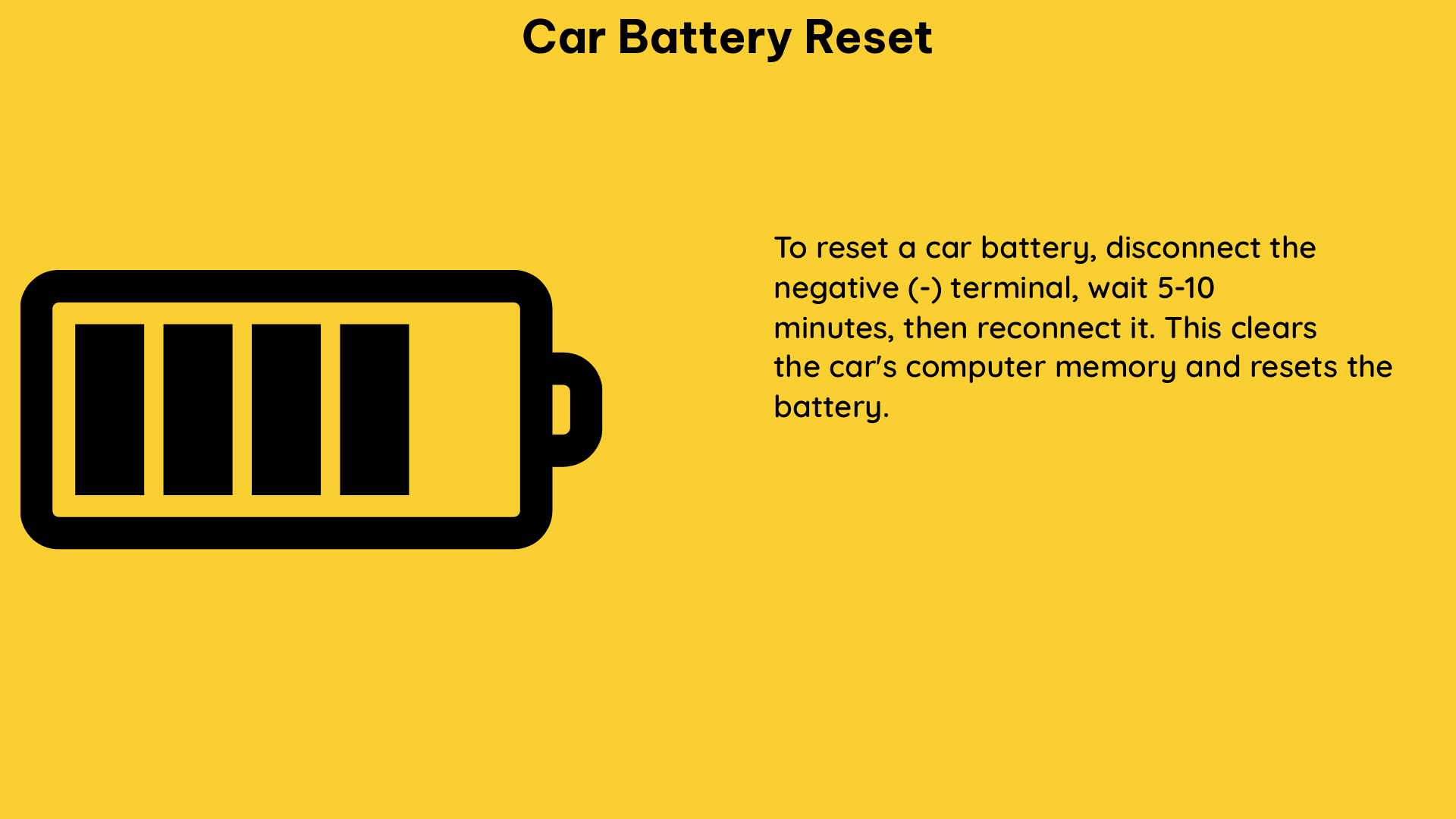The car battery reset, also known as the Battery Management System (BMS) reset, is a crucial process that recalibrates the BMS to accurately detect the upper and lower limits of the State of Charge (SoC) of an Electric Vehicle (EV) battery pack. This process is essential to ensure the BMS can monitor the EV battery pack accurately and restore the vehicle’s range.
Understanding the BMS Reset Procedure
The BMS reset procedure typically involves discharging the battery to single digits and then recharging it completely. This process allows the BMS to recalibrate and accurately determine the battery’s full capacity and discharge rate. Let’s dive into the specific steps:
Step 1: Bring the Battery to a Low State of Charge
The first step in the BMS reset process is to discharge the battery to a low state of charge, ideally 10% or below. This can be achieved by driving the car until the charge level drops to single digits. Reaching a single-digit SoC is crucial, as it allows the BMS to monitor the battery and more accurately determine the lower limits of the discharge rate.
Step 2: Let the Battery Charge Stabilize and Monitor
After discharging the battery, it’s essential to let it stabilize for at least an hour while keeping the systems “awake.” This can be done by checking your car’s app or locking and unlocking the doors. This step ensures the BMS can accurately detect the battery’s current state and prepare for the full recharge.
Step 3: Charge the Car Fully
Once the battery has stabilized, the next step is to charge the car completely. If you’ve set your battery charge limit below 100%, make sure to change it back to 100% so the BMS can calibrate most accurately. This full recharge allows the BMS to recalibrate the upper limits of the battery’s SoC.
It’s important to note that the BMS reset procedure may vary slightly depending on the make and model of your EV. However, the general principle of discharging and recharging the battery applies to most EVs.
Quantifiable Data and Benefits of BMS Reset

The BMS reset procedure can provide valuable quantifiable data and benefits for EV owners. Here are some key points:
-
Accurate Battery Health Assessment: The BMS reset can result in a more accurate picture of the battery’s health, allowing you to better understand the true capacity and performance of your EV’s battery pack.
-
Restored Driving Range: If your EV’s battery is showing a lower range than expected, a BMS reset can help restore the range to its full capacity. This is particularly useful for addressing range-related issues.
-
Diagnosis and Troubleshooting: The BMS reset procedure can help diagnose and address issues with the BMS, such as improper charging procedures or keeping the State of Charge in a small window, which can cause BMS failure.
-
Improved Charging Efficiency: By recalibrating the BMS, the charging process can become more efficient, ensuring the battery is charged to its full capacity without overcharging or undercharging.
-
Battery Longevity: Maintaining a properly calibrated BMS can contribute to the overall longevity of your EV’s battery pack, as it helps prevent premature degradation and ensures the battery is operated within its optimal parameters.
Conclusion
The car battery reset, or BMS reset, is a crucial process for EV owners to ensure the accurate monitoring and performance of their vehicle’s battery pack. By following the step-by-step guide outlined in this article, you can recalibrate your EV’s BMS and enjoy the benefits of improved battery health, restored driving range, and enhanced charging efficiency. Remember, the specific steps may vary based on your EV’s make and model, so always refer to your owner’s manual or consult with a professional if you have any doubts.
References:
- How to Reset the Battery Management System – AutoZone.com
- How to Reset the Battery Monitor on a Modern Vehicle – YouTube
- BMS calibration: how to regain the “lost” miles on your car – YouTube
- Does disconnecting the battery reset on-board memory? – Mechanics.stackexchange.com
- How to Reset the Battery Management System – AutoZone.com (FAQ/People Also Ask)

The lambdageeks.com Core SME Team is a group of experienced subject matter experts from diverse scientific and technical fields including Physics, Chemistry, Technology,Electronics & Electrical Engineering, Automotive, Mechanical Engineering. Our team collaborates to create high-quality, well-researched articles on a wide range of science and technology topics for the lambdageeks.com website.
All Our Senior SME are having more than 7 Years of experience in the respective fields . They are either Working Industry Professionals or assocaited With different Universities. Refer Our Authors Page to get to know About our Core SMEs.